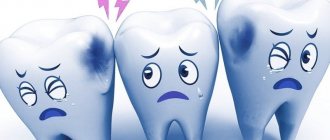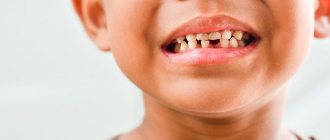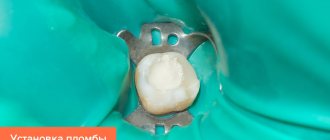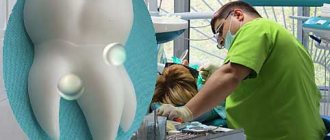The key to health is proper body care from childhood. This also applies to the oral cavity.
Parents should closely monitor the condition of the child's oral cavity. But sometimes, despite all efforts, proper care and a healthy diet, you may notice a deterioration in the condition of your teeth. A common problem is the presence of a yellow coating on them. Often parents consider this situation to pass and not require attention or treatment. And this is wrong! Yellow plaque on a child’s teeth can be either a symptom of problems in the body or an independent disease, which, if left untreated, can lead to various complications in the future.
Chromogenic components (food, drinks, other products)
The food we eat and other substances we use contain coloring agents (coffee, tea, cola, wine, tobacco, etc.) that can cause yellow, brown or bright orange spots to appear on the skin. teeth In most cases, the discoloration of teeth is generalized, which means that stains tend to form with equal success both on the entire surface of the tooth and in individual areas. If stains appear, it is better to make an appointment with an inexpensive dentist near your place of residence.
How to get rid of yellow plaque on children's teeth?
The main thing is to determine why the child has yellow teeth. And, based on the causes of the problem, begin a comprehensive fight against it.
It is important to understand that even if baby teeth turn yellow, it means that something is wrong in the body. Yes, baby teeth will be replaced by permanent teeth. But the problem will remain and will only get worse over time.
What to do to cope with yellowing of teeth in a child 1-2 years old or older?
Watch your diet
First of all, you need to pay attention to the baby’s diet. Tea, sweets, carbonated drinks are the cause of early yellowing of teeth. Additionally, natural foods such as pumpkin can also stain enamel. It is important that the diet is balanced. It is important that the child eats not only soft, but also hard vegetables and fruits. This will not only cleanse your teeth of plaque, but also strengthen them.
Teach hygiene skills
It is necessary to teach your child how to properly brush his teeth on his own and monitor this process. Paste and brush, mouth rinses and other hygiene equipment should be appropriate for the baby’s age.
To maintain oral hygiene, it is recommended to use cleansing wipes, for example, Asepta Baby, made in the form of a fingertip. They gently cleanse teeth and gums of plaque and disinfect the oral cavity.
After the child has 5-6 teeth, you can start brushing them. It is important that parents themselves know how this process should proceed correctly. You can consult your dentist before starting.
It is also important to choose suitable hygiene products, for example, Asepta Baby toothpastes for children with a reduced amount of fluoride in the body and special toothbrushes for their first teeth. The cleaning process must be supervised by adults.
To quickly get rid of yellow teeth, dentists recommend using one of the following methods:
- Mechanical cleaning. It is suitable for cleaning permanent teeth and should be performed by a specialist. This procedure cannot be carried out frequently. In addition, it is contraindicated for those whose teeth have turned yellow due to the thinness of the enamel.
- Use of bleaching agents. They are either used in the form of ointments, or they are offered to rinse the mouth. The effect from them comes more slowly than from mechanical cleaning, but in general they are a more gentle method of whitening. Attention: whitening products have age restrictions! Consult a specialist before using them!
- Use of ultraviolet lamps. This method is especially effective if the teeth have turned yellow due to the use of antibiotics or an unhealthy diet with an abundance of sugar or food coloring.
- Coating teeth with special solutions. For example, silver or fluoride varnish. This will not only solve the problem of yellowness, but also protect the enamel from possible caries or other damage. Also recommended for permanent teeth.
Tooth decay
In the early stages of tooth decay, white spots or spots appear on the tooth enamel. The affected areas lose their natural shine and become dull. A thorough examination reveals the presence of damage to the enamel. If the process of tooth decay progresses, the affected area becomes brown or black, it is necessary to diagnose dental treatment. The damage is initially noticeable as a small dark spot or spots that gradually increase in size (over several months to several years) and often lead to actual tooth decay.
Treatment of stains on teeth at the dentist
Regardless of the color of the stain on the tooth, the best solution is to consult a doctor. The dentists of the Elitedental M clinic will conduct the first free examination and prescribe the treatment necessary for your case.
The set of procedures depends on the cause of the spots:
- The most common, carious ones, are treated using special solutions that restore tooth enamel. The same restoration method is used for enamel hypoplasia.
- If the cause of the stain is tartar or plaque, the dentist will carefully remove it and apply a protective fluoride varnish.
- Chemical, laser and photo whitening help even out the shade of tooth enamel.
- The aesthetics of teeth is restored by installing cosmetic crowns.
- If there is a lack of minerals and salts, treatment is prescribed. The doctor prescribes calcium supplements and vitamins, and gives recommendations on the choice of medicinal paste.
Possible complications and consequences
Hypoplasia of tooth enamel without timely treatment contributes to the development of caries. An underdeveloped enamel layer does not protect dentin from the aggressive action of an acidic environment; the carious process quickly reaches the pulp and tooth root. Even in the absence of caries, teeth with thinned enamel and chips react with pain to cold, salty and sweet foods. Unpleasant yellow-brown spots disrupt the aesthetics of a smile. The enamel layer with a damaged structure quickly wears off and chips, and malocclusion develops.
Elimination at home
As many years of research have shown, only plaque caused by food can be eliminated at home. If you regularly use high-quality toothpastes and toothbrushes, mouthwashes, and use whitening pastes once a week, you can achieve good results. Pharmacies also sell special kits - a silicone tray and a gel, which contains hydrogen peroxide or active enzymes that chemically destroy the plaque film.
The chronic yellowing of a heavy smoker and coffee drinker is almost impossible to eliminate without the help of dentists. Having penetrated into the deep layers of enamel, the dyes can no longer be removed with a brush.
Some people use homemade products based on baking soda (abrasive), lemon juice (acidic), and hydrogen peroxide. Such recipes can give results, but they damage the enamel, lead to erosions, and demineralization of certain areas.
Removing yellow plaque on teeth at home - step-by-step instructions
Step one.
Floss regularly. If this is not done, yellow plaque will accumulate between the teeth, and regular flossing will prevent this. Be careful not to damage your gums.
Step two.
You can make your own toothpaste from improvised materials that are available in almost every home. This could be, for example, lemon juice and baking soda. The first is a natural whitening agent, and baking soda effectively restores the acid-base balance of the oral cavity. To make the paste, mix some juice with a few teaspoons of baking soda to create a paste-like mixture. Apply this product with a regular toothbrush, then wait about a minute and rinse your mouth thoroughly. Do not rub the brush too hard, otherwise you can damage the enamel of your teeth!
Step three.
You can also prepare a special scrub by mixing salt with soda and strawberries. Salt in this case is a natural abrasive, while strawberries effectively destroy plaque due to their high vitamin C content. You only need two or three berries of strawberries, a few grams of salt, and one pinch of soda. Use the same toothbrush to rub the scrub over your teeth. Rinse your mouth five minutes after application.
Step four.
You can rinse your mouth with hydrogen peroxide. Spit it out immediately, and after the procedure, brush your teeth (with a brush and toothpaste as usual).
Step five.
Other products can be used to whiten teeth. For example, orange peel - rub it on your teeth before going to bed for several minutes. Vitamin C contained in the peel will help fight yellow plaque on teeth. The first results can be seen after a few weeks.
Step six.
Buy whitening toothpastes. There are no problems with this, since such pastes are sold in all pharmacies.
Step seven.
Use the methods described above regularly. Thanks to some of them, teeth can be whitened almost immediately, but for best results regular use is required!
Black spots
Tooth degradation of this nature can have several causes. One of them is Priestley's plaque , most often caused by disturbances in the microflora of the children's intestines. As a result, both baby and molar teeth are destroyed by bacteria. The disease can only be treated with medication.
Black spots can also be caused by the development of caries. Blackening of teeth is often a consequence of a lack of calcium in the body. For prevention, you need to reduce the amount of sweets you consume.
In addition, you can increase calcium levels by giving your child more milk and using vitamin complexes prescribed by your dentist.
Much less often, but still possible, this pathology can be inherited from parents. Therefore, the child must have personal cutlery (at least a spoon and fork).
Saliva and its role in oral health.
Firstly, saliva is a source of calcium and phosphorus for enamel (remember we talked about remineralization).
Secondly, saliva has a buffer capacity.
The buffering capacity of saliva is the ability to neutralize acids due to the interaction of the main buffer systems of saliva: bicarbonate and
phosphate
Eating carbohydrate foods for a long time reduces, and eating high-protein foods increases the buffer capacity of saliva.
On average, the pH of saliva in the oral cavity of a healthy person is between 6.5 and 7.5.
Slight fluctuations in pH are possible during the day and night (slightly lower at night).
An adult produces an average of 1500 to 2000 ml of saliva per day.
The rate of secretion depends very much on many factors - age, food irritant (I saw my favorite dish and even salivated, nervous excitement.
During sleep, saliva is secreted 8–10 times less.
The high buffering capacity of saliva is one of the most important factors that increases the resistance of teeth to caries.
The components of saliva make up the pellicle - a thin film that covers all surfaces of both hard and soft tissues of the oral cavity.
The pellicle has many tasks, including regulating the microbiota of the oral cavity.
The deposition of cells and food debris from saliva onto the pellicle leads to the formation of dental plaque - a loose white substance made of bacteria, desquamated epithelium, leukocytes and food debris.
The compaction of a pellicle in a certain place and the accumulation of bacteria there is a bacterial plaque, the source of caries.
Now, with an understanding of what saliva is needed for and what a pellicle is, let’s return to the topic of plaque.
Medical stain removal
To eliminate yellowness of enamel in dentistry, there are many methods used routinely. Before professional removal of yellow stains begins, an examination of the oral cavity is carried out to identify the true cause of the pathology. Patients are often recommended to have their teeth professionally cleaned twice a year.
There are several methods of hygienic treatment:
- laser exposure effectively removes tartar and plaque, splitting them into small particles;
- ultrasonic exposure destroys enamel layers due to frequency vibrations;
- treatment with gel and activator lamp is effective due to the content of hydrogen peroxide in its composition.
If pigmentation is associated with the removal of a nerve or clouding of the filling, various agents are introduced into the dental canal to help whiten the teeth from the inside.
There are times when it is impossible to eliminate yellowness. In this situation, the patient is offered to use veneers or lumineers. Onlays are made according to individual parameters of dental impressions. Since the thickness of such devices is minimal, they are completely invisible on the teeth.
Recommendations from Amel Dental dentists
Beautiful teeth are healthy teeth, and dental health is the result of a patient’s responsible attitude towards their health and oral hygiene.
You can avoid the appearance of unsightly pigment spots on your teeth by following the recommendations of dentists:
- to give up smoking;
- restriction in the diet of coloring drinks and foods;
- restriction in the diet of foods containing acid (citrus fruits, apples);
- balanced diet (sufficient amounts of calcium, vitamin C and other minerals, vitamins necessary for the formation of bone tissue), high-quality drinking water;
- Regular visits to dentistry for the purpose of prevention and timely treatment of caries and other oral diseases.
If stains appear on your teeth, you should not self-medicate, since in most cases, aesthetic defects of the teeth are associated with disorders and diseases within the body. Only a qualified doctor can determine the cause of the pathology and prescribe the correct treatment.











